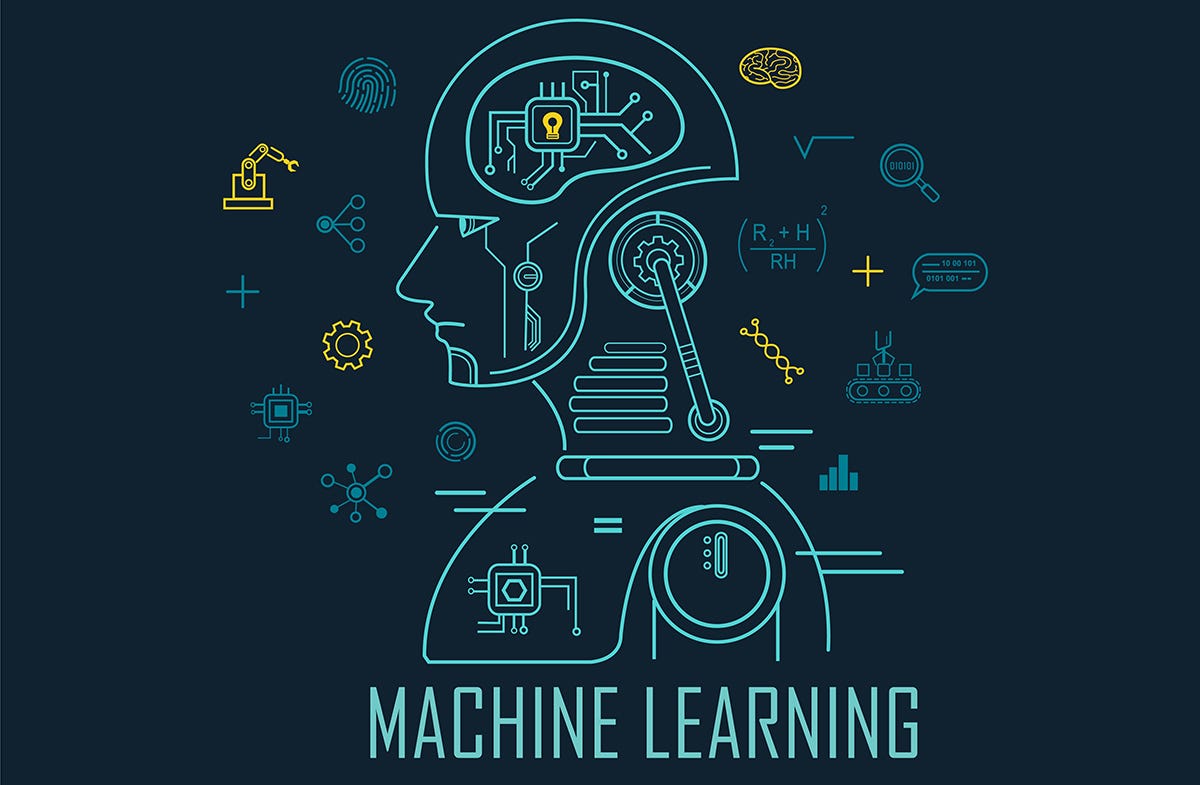Machine Learning
Machine Learning (ML) is a subset of artificial intelligence (AI) that enables systems to learn from data, identify patterns, and make decisions with minimal human intervention. By using algorithms and statistical models, ML allows computers to improve their performance on tasks through experience and data without being explicitly programmed for each task.
Key Concepts in Machine Learning:
Algorithms: Machine learning relies on various algorithms to process data and make predictions or decisions. Common types include:
- Supervised Learning: The algorithm is trained on labeled data, meaning the input and output are known. The goal is to map inputs to outputs. Examples include classification and regression tasks (e.g., spam detection or predicting house prices).
- Unsupervised Learning: The algorithm is given input data without labeled outcomes. The goal is to find hidden patterns or intrinsic structures (e.g., clustering algorithms like k-means for grouping data).
- Reinforcement Learning: The algorithm learns through trial and error, receiving rewards or penalties for actions and adjusting future actions to maximize rewards (used in robotics, game playing, etc.).
- Semi-Supervised Learning: Combines a small amount of labeled data with a large amount of unlabeled data to improve learning accuracy.
- Deep Learning: A subset of ML, it uses neural networks with many layers to process data in complex ways (used for image and speech recognition, among other tasks).
Data: The foundation of machine learning. Large volumes of data, often referred to as "big data," are needed to train machine learning models. This data can be structured (e.g., spreadsheets) or unstructured (e.g., images, text).
Model: A machine learning model is the output of an algorithm after training on data. The model can then be used to make predictions or decisions.
Training and Testing: ML models are trained on a portion of data and then tested on unseen data to evaluate their performance. Common metrics for evaluation include accuracy, precision, recall, and F1 score.
Feature Engineering: The process of selecting, modifying, or creating relevant features (input variables) from raw data to improve the performance of machine learning models.
Overfitting and Underfitting:
- Overfitting: When a model is too complex and performs well on training data but poorly on new data.
- Underfitting: When a model is too simple and cannot capture the underlying pattern in the data.
Applications of Machine Learning:
Image and Speech Recognition: ML is widely used in facial recognition systems, autonomous vehicles (for detecting obstacles), and voice assistants like Siri or Alexa.
Healthcare: Machine learning is used in medical imaging, disease diagnosis, drug discovery, and personalized treatment plans by analyzing vast amounts of patient data.
Natural Language Processing (NLP): Machine learning powers language translation services, chatbots, sentiment analysis, and recommendation systems.
Financial Services: Banks use ML to detect fraudulent transactions, predict stock prices, assess credit risks, and provide personalized banking services.
Recommendation Systems: E-commerce and streaming platforms use machine learning to recommend products, movies, or songs based on user behavior and preferences.
Autonomous Systems: Self-driving cars, drones, and robotics rely on machine learning for navigation, object detection, and decision-making.
Types of Machine Learning Algorithms:
Linear Regression: Used in regression tasks to predict continuous outcomes (e.g., predicting sales based on advertising spend).
Decision Trees: Used in classification tasks, decision trees split data into branches to make decisions based on the input features.
Random Forests: An ensemble learning method that creates multiple decision trees and combines their predictions for more robust results.
Support Vector Machines (SVM): A classification algorithm that finds a hyperplane separating different classes in the feature space.
Neural Networks: A network of interconnected layers of nodes (neurons) that mimic the structure of the human brain, used in deep learning.
Challenges in Machine Learning:
Data Quality: Machine learning models are only as good as the data they are trained on. Poor quality or biased data can lead to inaccurate predictions.
Model Interpretability: Some ML models, especially deep learning models, are often considered "black boxes" because it is difficult to understand how they make decisions.
Ethical Concerns: The use of machine learning raises questions about privacy, bias, and accountability, especially when used in sensitive areas like hiring, law enforcement, and healthcare.
Future of Machine Learning:
As machine learning continues to evolve, we can expect more sophisticated AI systems that improve accuracy, make predictions in real-time, and solve increasingly complex problems. Machine learning will continue to drive advancements in autonomous systems, healthcare, finance, and more, shaping the future of technology and society.


